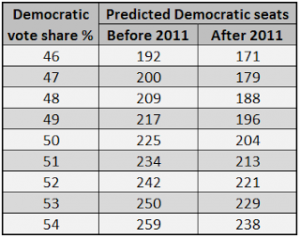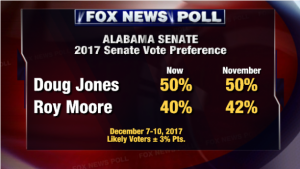The following article by Democratic strategist Robert Creamer, author of Stand Up Straight: How Progressives Can Win, is cross-posted from HuffPo:
In the long struggle to bend the arc of the moral universe toward justice, the forces of greed and inequality have just won a battle.
The owners of the Republican Party – a small, elite class of wealthy investors and CEO’s – successfully ordered their minions in public office to massively lower their share of the taxes that we all pay for the things we do together, as a country.
The non-partisan Tax Policy Center has found that when all of the provisions of the Republican tax bill are in full effect by 2027, 82.8 percent of the bill’s benefits will go to the top 1 percent ― and 53 percent of Americans would actually pay more in taxes.
The bill also contained provisions that the non-partisan Congressional Budget Office says will mean 13 million fewer Americans will be covered by health insurance and that premiums will increase by double digits for millions more.
The GOP was successful at teeing up its next campaign – to cut Medicare, Medicaid, Social Security and education in order to offset the rising federal deficits that will result from their tax cuts for the very rich.
They have won that battle. But the battle will actually make it more likely that progressives will ultimately win the war.
Winning wars is not just a story of individual victories. It is about maneuvering, the alignment of forces, the morale of the troops, the underlying geography defining the conflict. It is about who can take and seize the high ground – in this case, the high political ground.
The Republican Party will pay a huge political price for their tax “victory.”
Granted that the rulers of the Party may not care. The owners of the Party made it ever so clear that their Congressional troops were expected to pay any price to give them the trillions of dollars they will receive from the Republican tax bill.
The GOP foot soldiers were told pretty explicitly that the Party’s owners had invested millions over the last two decades, and now that they were blessed with a once-in-a-generation control over both Houses of Congress and the White House, they expected to be paid their return right now – while the getting is good.
A Senate Budget Committee Analysis shows the kind of payoff the GOP tax bill gives to big GOP donors.
Goldman Sachs for example invested $26,894,393 in donations to Republicans from 1990 to 2017. It will receive about a $6 billion tax cut.
Here are some of the biggest winners:
Goldman Sachs: Contributions, $26,894,393 – Tax Cut, $6,091,800,000
General Electric: Contributions, $20,025,764 – Tax Cut, $15,990,000,000
Citigroup: Contributions, $19,759,908 – Tax Cut, $9,165,000,000
Microsoft: Contributions, $17,934,790 – Tax Cut, $27,690,000,000
Exxon Mobil: Contributions, $16,845,751 – Tax Cut, $10,530,000,000
Pfizer: Contributions, $15,673,394 ― Tax Cut, $38,794,080,000
Walmart: Contributions, $12,894,979 – Tax Cut, $ $5,187,000,000
Chevron: Contributions, $12,779,874 – Tax Cut, $9,048,000,000
Eli Lilly: Contributions, $9,764,311 – Tax Cut, $5,460,000,000
Google: Contributions, $7,392,522 – Tax Cut, $11,836,500,000
Johnson & Johnson: Contributions, $5,636,745 – Tax Cut, $12,909,000,000
Proctor & Gamble: Contributions, $3,682,275 – Tax Cut, $9,555,000,000
IBM: Contributions, $1,873,305 – Tax Cut, $13,923,000,000
Apple: Contributions, $500,381 – Tax Cut, $47,970,000,000
Total: Contributions, $178,903,432 – Tax Cut, $236,453,880,000
As a group, these firms will see tax cuts 1,321 times their original investment in contributions. You have to admit, the GOP is delivering for those who own the Party.
But that doesn’t change the fact that the bill will be, as Democratic Leader Chuck Schumer said during floor debate, an anchor around the ankles of every Republican candidate for office in 2018 – and in 2020.
Progressives gained three major advantages from this year’s tax battle.
1). First, Progressives crushed the opposition when it came to framing the tax battle and branding Republican tax policy.
The GOP tax plan is now politically toxic. The most recent NBC poll found that by a margin of 63 percent to 7 percent, Americans believe the GOP tax plan was designed to help corporations and the wealthy, not the middle class. Majorities also say they expect their own taxes and those of middle-class families to stay the same or go up under the bill, while taxes for corporations and the wealthy go down.
The forces opposing the tax bill wanted to brand it as a tax cut for millionaires, billionaires and wealthy corporations paid for by cutting Medicare, Medicaid, Social Security and education – and by raising taxes on the middle class. They were successful.
A recent CNN poll found that only 33 percent of Americans supported the bill and 55 percent opposed. A Quinnipiac poll had disapproval of the Republican plan at 55 percent, vs. 26 percent approval.
Progressives also won the underlying debate over whether tax cuts for the rich ultimately “trickles down” to ordinary people. According to a recent USA Today poll, most respondents believe it would not materially help grow the economy. White House arguments that the tax bill would raise wages by $4,000 per person were written off by the public as being laughable.
Does all of this matter politically? Quinnipiac found that 43 percent say they are less likely to vote for a U.S. Senator or Member of Congress who supports the plan, with only 18 percent saying they would be more likely. That is a net deficit of 25 percent who are less likely to support those who voted yes on the bill.
Some Conservatives argue that the bill will actually become more popular as working people see cuts in their taxes next year. But as pollster Geoff Garin points out:
Here’s the truth: 80 percent of taxpayers will see an increase of less than 2 percent in their after-tax income (it is not until you get to the 95th percentile that the after-tax income benefits are much greater). There is NO history of voters being grateful for tax cuts that small – in fact history suggests that most taxpayers do not even recognize having received a tax cut when it is that small. The problem is compounded for the Republicans in two ways: (1) they have raised expectations in people’s minds that they would receive a much larger tax cut, and (2) people will feel their tax cut is especially paltry when they hear about the size of the tax cuts that millionaires and billionaires are receiving.
The Republicans have another, even bigger problem: Voters pay more attention to what they are losing than what they are getting. And going forward every proposed Republican cut to things people care about – including Medicare, Medicaid, and education ― can credibly be described as occurring in order to pay for the GOP’s tax cuts for millionaires and big corporations.
And organizations like Not One Penny and Americans for Tax Fairness that spearheaded the campaign against the Republican tax bill plan to run major efforts over the months ahead to drill this frame into the consciousness of the voters.
2). Second, the campaign against the tax bill put large numbers of people into motion. There is nothing more important to engage people in politics – or in a political movement – than motivating them to take action. When people go to a demonstration or town hall meeting or press event – when they make a phone call to Congress or share a Facebook post – they become emotionally invested in the issue and feel a sense of empowerment that spurs further action.
The Republicans and the Tea Party understood that in 2009, when they launched their war on the Affordable Care Act. That paid off in a highly-motivated Republican volunteer and activist base in the 2010 elections.
The tax battle drew from – and added to – the already robust ranks of the Resistance to Trump and GOP policies. Many of those tax warriors will turn their attention to voter registration and get-out-the-vote activities in the months leading up to next fall – the same way they have in Virginia and Alabama.
3). Third, the fact that the campaign to stop the Trump Tax Cuts made the proposal politically toxic, helped insure that not one Democrat voted to support it. You could not ask for a more iconic example of the difference in Republican and Democratic economics. It is a clear example that Democrats support the interests of ordinary people, while the Republican Party is in business to defend the interests of the 1 percent.
Every Republican in the Senate voted to do the will of the GOP donor class.
Susan Collins, often referred to as a “Moderate,” stood up, saluted and did the bidding of the Party’s owners on Wall Street.
Lisa Murkowski – who was a heroine of the ACA battle earlier this year, got down on the proverbial floor and kowtowed to the oil barons who wanted drilling rights in the Alaska Wildlife Refuge and the Koch Brothers who wanted huge corporate tax cuts.
“Deficit Hawk” Bob Corker apparently felt just fine abandoning his “principled” stand against increasing the deficit once huge tax cuts for real estate investors like himself and his friends were added to the bill.
The tax battle has already changed the perceptions of the Republican and Democratic brands.
In June, the NBC/WSJ poll showed Americans preferred Republicans over Democrats to handle the tax issue by 4 percentage points. Now, they prefer Democrats by 4 points. Republicans have moved from a 7 percentage point advantage to a 5 percentage point deficit when it comes to which Party voters think is best equipped to handle the economy.
That is one reason why a new CNN Poll finds that voters prefer Democrats over Republicans by a whopping 18 percent point margin – 56 to 38 ― as their choice in the 2018 Mid-Term elections. And when asked about the Presidential election in 2020 in an NBC poll, 52 percent said they would definitely or probably vote against Trump while only 36 percent said they would definitely or probably vote for his re-election.
The combined effects of the tax battle, the fight to prevent the GOP from taking away people’s health care, Trump’s unpopularity – and the impact of the GOP Senate candidate Roy Moore ― resulted in the surprising result that the Republican Party was actually more unpopular than the Democratic Party in exit polls taken after the Senate election in Red State bastion Alabama.
Nationally, the Republican brand is in a free fall.
If the GOP pursues its goals of “reforming” – actually cutting – Social Security, Medicare and Medicaid, this trend will intensify and harden.
As we saw during the battle to defend the ACA, people get really riled up when someone tries to take something away from them – like their health care. We saw the same thing in 2005 when President Bush tried to privatize Social Security and during House Speaker Ryan’s previous attempts to turn Medicare into a voucher system.
Remember, from the voter’s point of view it isn’t just who wins that matters – it’s who is out there fighting for them. It’s all about who is on your side.
And don’t expect the fact that they now have one “legislative” victory to bolster the GOP’s position with the voters. Only Washington pundits think about putting legislative points on the board – ordinary voters couldn’t care less.
Barack Obama put dozens of legislative points on the board in the first two years of his administration. That didn’t do Democrats any good at all in the 2010 mid-terms.
In 2010, the GOP successfully mobilized millions of people to vote against Democrats who they claimed were trying to “take away their health care.” That was, of course a complete lie. The ACA and the other pieces of legislation passed in Obama’s first two years were actually good for ordinary people – and now they are all very popular.
The GOP tax plan is horrible for ordinary voters. Many might see piddling reductions in their taxes next year or the next. But they will hardly be noticeable. And in the end, whatever benefits there are for ordinary people will expire and those for huge corporations will go into the future – or at least until they are repealed by a Democratic Congress and President. Most people already think they have been had, and they won’t change their minds because they have, in fact, been had.
The GOP tax “victory” won’t look so glorious from the standpoint of late November 2018. As my wife Congresswoman Jan Schakowsky says, we can’t yet see the huge Democratic wave next fall, but we have begun to feel the spray.






